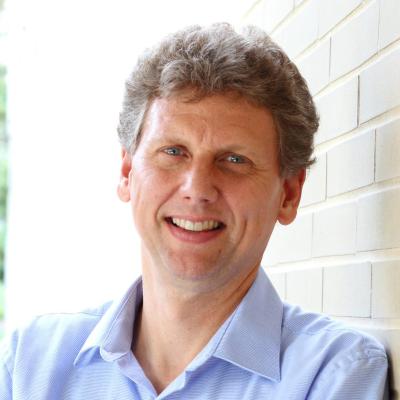Mailing Address:
104 Davey Lab, Box #232, University Park, Pa 16802
Education and Background
Lehigh University (B.S., Highest Honors, Engineering Physics), 1986
JILA, University of Colorado, Boulder (Ph.D., Physics), 1990
Stanford University, Post-doctoral researcher, 1991-1993
Honors and Awards
- European Frequency and Time Award, 2013
- Fellow, American Association for the Advancement of Science (AAAS), 2019
- Fellow of the American Physical Society, DAMOP, 2005
- IEEE Fellow, UFFC, 2020
- Chair, 2017-2018, American Physical Society Topical Group on Precision Measurement & Fundamental Constants, Chair Line, 2015-2019
- Bourse chercheurs étrangers de la Ville de Paris, 2009
- Yale Junior Faculty Fellowship, 1996-1997
- National Science Foundation National Young Investigator, 1994
- Tau Beta Pi, 1986
Selected Publications - Full list of publications on Google Scholar
- “Isotope Shifts in Cadmium as a Sensitive Probe for Physics Beyond the Standard Model,” B. Ohayon, S. Hofsäss, J.E. Padilla-Castillo, S. C. Wright, G. Meijer, S. Truppe, K. Gibble, B. K. Sahoo, New Journal of Physics 24, 123040 (2022).
- “Fundamental physics with a state-of-the-art optical clock in space,” Andrei Derevianko, Kurt Gibble, Leo Hollberg, Nathan Newbury, Christopher Oates, Marianna Safronova, Laura Sinclair, and Nan Yu, Quantum Science and Technology, 7, 044002 (2022).
- "Narrow-line Cooling and Determination of the Magic Wavelength of Cd," A. Yamaguchi, M. S. Safronova, K. Gibble, and H. Katori, Phys. Rev. Lett. 123, 113201 (2019).
- "Advances in the accuracy, stability, and reliability of the PTB primary fountain clocks,” S. Weyers, V. Gerginov, M. Kazda, J. M. Rahm, B. Lipphardt, G.Dobrev and K. Gibble, Metrologia 55, 789 (2018). See Metrologia Highlights of 2018.
- "Atomic Clock Measurements of Quantum Scattering Phase Shifts Spanning Feshbach Resonances at Ultralow Fields," Aaron Bennett, Kurt Gibble, Servaas Kokkelmans, Jeremy M. Hutson, Phys. Rev. Lett. 119, 113401 (2017).
- "Towards a Mg Lattice Clock: Observation of the 1S0−3P0 Transition and Determination of the Magic Wavelength," A. P. Kulosa, D. Fim, K. H. Zipfel, S. Rühmann, S. Sauer, N. Jha, K. Gibble, W. Ertmer, E. M. Rasel, M. S. Safronova, U. I. Safronova, and S. G. Porsev, Phys. Rev. Lett. 115, 240801 (2015).
- "Scattering of Cold-Atom Coherences by Hot Atoms: Frequency Shifts from Background-Gas Collisions," Kurt Gibble, Phys. Rev. Lett. 110, 180802 (2013).
- "s-Wave Collisional Frequency Shift of a Fermion Clock," Eric L. Hazlett, Yi Zhang, Ronald W. Stites, Kurt Gibble, and Kenneth M. O'Hara, Phys. Rev. Lett. 110, 160801 (2013).
- "Direct observation of resonant scattering phase shifts through Feshbach resonances and their energy dependence," S. D. Gensemer, R. B. Martin-Wells,A. W. Bennett, and K. Gibble, Phys. Rev. Lett. 109, 263201 (2012).
- "Spin waves and Collisional Frequency Shifts of a Trapped-Atom Clock," Wilfried Maineult, Christian Deutsch, Kurt Gibble, Jakob Reichel, and Peter Rosenbusch, Phys. Rev. Lett. 109, 020407 (2012).
- "Progress in atomic fountains at LNE-SYRTE," J. Guéna, M. Abgrall, P. Laurent, B. Chupin, M. Lours, G. Santarelli, P. Rosenbusch, M. E. Tobar, R. Li, K. Gibble, A. Clairon, and S. Bize, Invited Paper, IEEE Transactions on Ultrasonics, Ferroelectrics, and Frequency Control 59, 391 (2012).
- "Evaluation of Doppler Shifts to Improve the Accuracy of Primary Atomic Fountain Clocks," J. Guéna, R. Li, K. Gibble, S. Bize, and A. Clairon, Phys. Rev. Lett. 106, 130801 (2011). See APS Physics Synopsis, Physics (2011).
- "Decoherence and Collisional Frequency Shifts of Trapped Bosons and Fermions," K. Gibble, Phys. Rev. Lett. 103, 113202 (2009).
- "A quantum scattering interferometer," R. A. Hart, X. Xu, R. Legere, & K. Gibble, Nature 446, 892 (2007). See Science and Editor's summary in Nature.
- "Difference between a Photon’s Momentum and an Atom’s Recoil," K. Gibble, Phys. Rev. Lett. 97, 073002 (2006). See Physics Review Focus and Laser Focus World.
Research Interests
Microwave and optical frequency atomic clocks; space-based atomic clocks; ultracold atom-atom scattering; ultra-stable lasers; laser cooling; precision measurements; experimental atomic physics.
Our major projects currently include developing a cadmium optical-frequency lattice atomic clock and evaluating the accuracy of primary atomic clocks on earth and in space.
